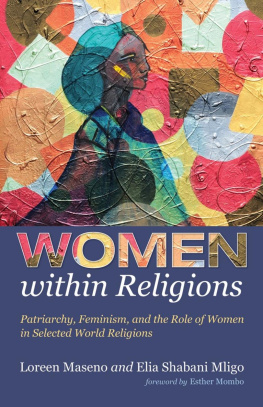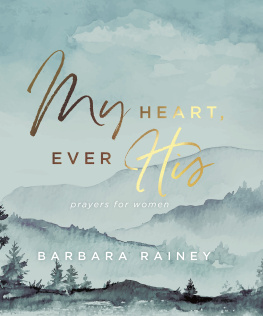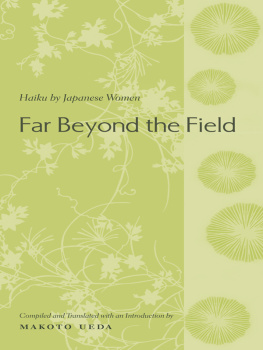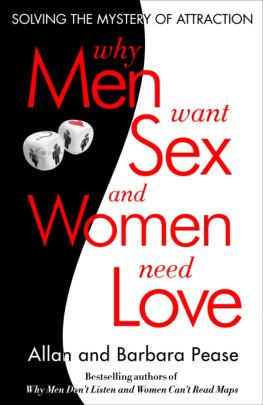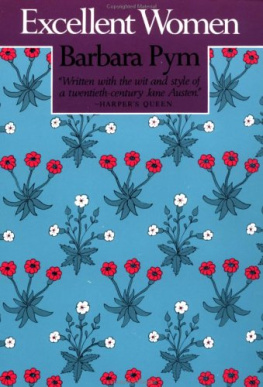Women in Japanese Religions
WOMEN IN RELIGIONS
Series Editor: Catherine Wessinger
Women in Christian Traditions
Rebecca Moore
Women in New Religions
Laura Vance
Women in Japanese Religions
Barbara R. Ambros
Women in Japanese Religions
Barbara R. Ambros
NEW YORK UNIVERSITY PRESS
New York and London
NEW YORK UNIVERSITY PRESS
New York and London
www.nyupress.org
2015 by New York University
All rights reserved
References to Internet websites (URLs) were accurate at the time of writing. Neither the author nor New York University Press is responsible for URLs that may have expired or changed since the manuscript was prepared.
ISBN: 978-1-4798-2762-6 (hardback)
ISBN: 978-1-4798-8406-3 (paperback)
For Library of Congress Cataloging-in-Publication date, please contact the Library of Congress
New York University Press books are printed on acid-free paper, and their binding materials are chosen for strength and durability. We strive to use environmentally responsible suppliers and materials to the greatest extent possible in publishing our books.
Manufactured in the United States of America
10 9 8 7 6 5 4 3 2 1
Also available as an ebook
For my mother, the strongest woman I know
Contents
It is impossible to acknowledge everyone who has supported me throughout this project. I have benefited greatly from their suggestions, and I hope that they will feel gratified by seeing this book in print. I am especially grateful to Cathy Wessinger and Helen Hardacre for urging me to take on this project. Cathy also provided much encouragement and many insightful comments as the manuscript progressed. Randall Styers, Laurie Maffly-Kipp, Sarah Shields, and several other colleagues at the University of North Carolina at Chapel Hill offered helpful suggestions on how to frame the project. I owe a special debt of gratitude to Mark McGuire, Rebecca Mendelson, Matt Mitchell, and two anonymous readers for commenting extensively on the manuscript. And I am particularly grateful to my students at UNC Chapel Hill who have explored this topic with me in the classroom. I would also like to convey my gratitude to Suzuki Ktar and Nogawa Yurie for their assistance in obtaining images from the Itsukushima Shrine.
As the project progressed, the North East Asia Council at the Association of Asian Studies, the Japan Foundation, the Triangle Center for Japanese Studies, and the McLester Fund in the Department of Religious Studies at UNC Chapel Hill provided essential financial support for several research trips to Japan. I would also like to thank the Institute for Religion and Culture of Nanzan University for hosting me during a trip in the summer of 2011, when conditions in the Kant region were uncertain due to the March 11, 2011, triple disaster. The Burkhardt Fellowship of the American Council of Learned Societies and the National Humanities Center allowed me to complete this manuscript under optimal conditions. The University Research Council at the University of North Carolina at Chapel Hill, the Triangle Center for Japanese Studies, and the Japan Foundation provided seminal funding for image permissions and other production costs associated with this book.
Finally, I would like to acknowledge my friends and family: Shibasaki Hiroyo for our enlightening conversations about Japanese women and religion; Ogasawara Rygen and his family for generously assisting me during research in Matsumoto; Nishino Kazue for hosting me in Kanazawa; and Shinoda Kazue and Kji, who opened their home to me during my lengthy research stays in Tokyo, and especially to Kazue for exploring the beauty of the Kumano mountains with me. Most of all, I would like to thank my husband for being so supportive throughout this project.
Why Study Women in Japanese Religions?
In 1911, Hiratsuka Raich (18861971), one of Japans early feminists, wrote in the opening issue of the womens journal Bluestocking, In the beginning, woman was the sun. An authentic person. Today she is the moon. Living through others. Reflecting the brilliance of others.
This book is intended as an important corrective to more common male-centered narratives of Japanese religious history. It presents a synthetic long view of Japanese religions from a distinct anglewomens historythat has typically been discounted in standard survey accounts of Japanese religions. It also provides a framework for existing works on women in Japanese religions, which are usually microhistories and lack the comprehensive perspective that only the longue dure can provide. Despite its focus on women, this volume resists a narrative of mythical independence that is shattered by historical oppression and then, conversely, overturned by modern liberation. Such a narrative is seductive, but ultimately it essentializes the diverse experiences of women of different social backgrounds over the vast span of Japanese history. Instead, this book explores a diverse collection of writings by and about women to investigate the ways ambivalent religious discourses in Japan have not simply subordinated women but also given them religious resources to pursue their own interests and agendas.
Scholars have widely acknowledged womens persistently ambivalent treatment within the Japanese religious traditions, including Shinto, Buddhism, Confucianism, Christianity, and new religious movements. In the case of premodern Japanese Buddhism, Bernard Faure, a scholar of religion, has eloquently surveyed and articulated this ambivalence. However, while Faure has rightfully cautioned scholars against idealizing the Buddhist tradition for its egalitarian potential and removing it from the social and historical realities of its Japanese context, his work falls in line with much existing scholarshipparticularly Japanese scholarship influenced by Marxist paradigmsthat depicts religion as a mere means of oppression, especially for women. This raises the question of how ambivalent and even overtly misogynistic religious discourses on gender have still come to inspire devotion and emulation among women.
As the anthropologist Saba Mahmood has argued, universalized assumptions of patriarchal domination have led feminist scholars to question why women assert their presence in... male-dominated [religious] spheres while... the very idioms they use to enter these arenas are grounded in discourses that have historically secured their subordination to male authority.
By viewing Japanese religious history through the eyes of women, this text presents a new narrative that offers strikingly different vistas of Japans pluralistic traditions than the received accounts foregrounding male religious figures and male-dominated institutions. For instance, many traditional versions of Japanese religious history give considerable attention to monastic or priestly lineages, which largely excluded women. Such patriarchal lineages do not play a central role in this books narrative. It emphasizes instead issues that transcend purely sectarian concerns: female divinities as the embodiments of ideal femininity and sources of political legitimation; changing definitions of female monastic renunciation; female shamans and their links to marginality and political authority; perceptions of women as emblems of defilement and demonic power; the religious implications of the fluctuating definitions of marriage and inheritance rights; and the movement toward and contestations of gender equality in the modern era.




